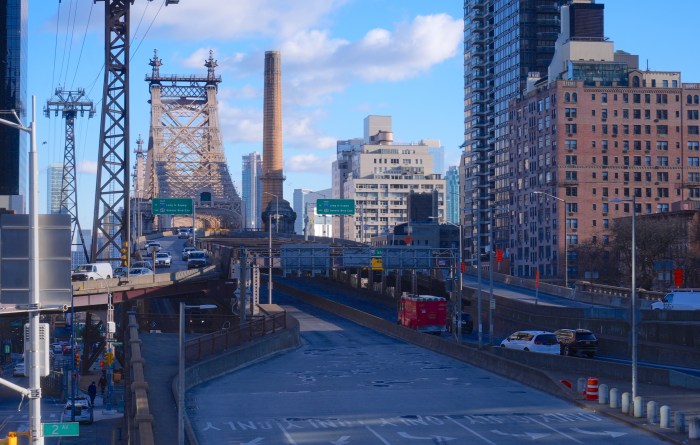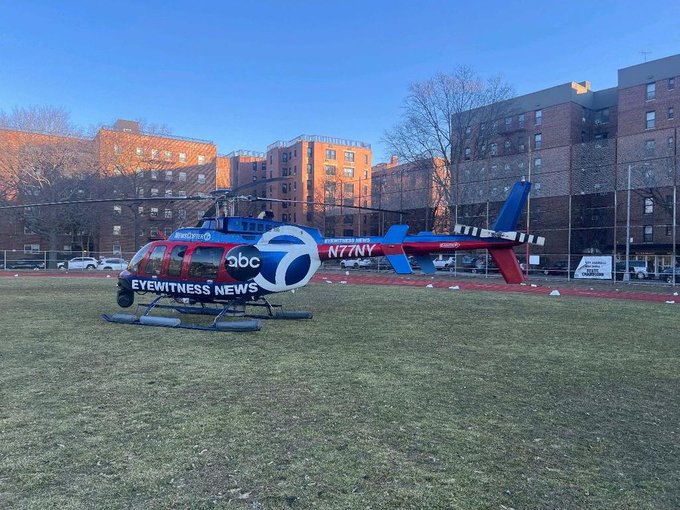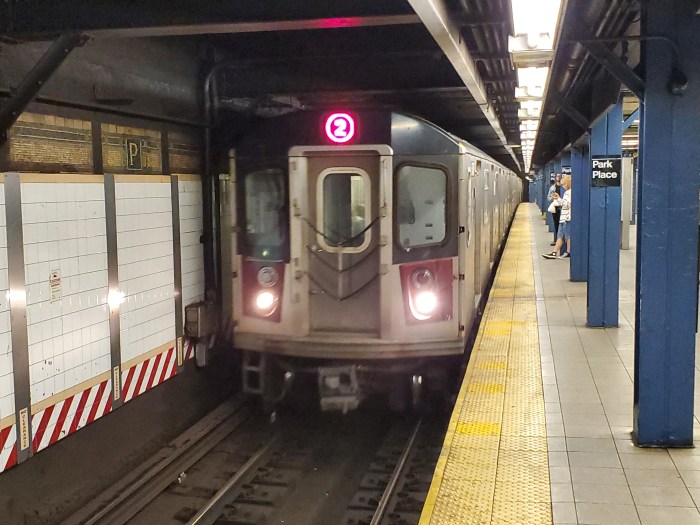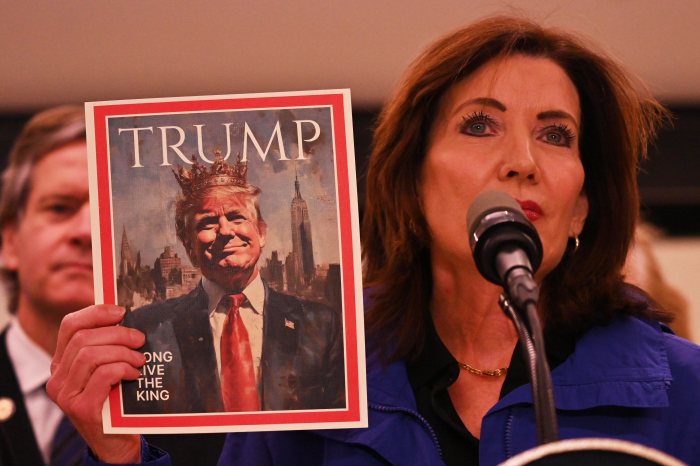
The marks are in for city buses — and the results are not fridge-worthy.
Nearly 75 percent of bus routes across the city received D or F letter grades from the Bus Turnaround Campaign, a group of advocates who released a new analysis and report card for 246 routes at a news conference Thursday. The group graded each route by average speed and reliability.
Among the slowest buses are the M42 across 42nd Street, with an average speed of 3.5 mph; the M31, which runs from Yorkville to Midtown West and averages 3.7 mph; and the B63, running from Brooklyn Bridge Park to Bay Ridge mostly along Fifth Avenue at 4.8 mph.
The average human walking speed is 3.1 mph.
The grades reflect grave concerns over the MTA’s bus service, which officials believe has spiraled into a crisis on par with — and in some cases, more serious than — subway service.
Riders have ditched buses, stalled in slower and slower traffic, at an alarming clip — especially considering the population and job growth in the city. There were 46 million fewer annual city bus trips recorded in 2015 than there were in 2010.
Between 2016 and last year, service declined again, by six percent from about 910 million total rides to about 854 million rides. That drop represents the biggest single-year decline in ridership in the past 15 years. And some politicians and experts fear that frustrated riders are opting instead for more congestion-causing options like driving or using e-hail services.
“This goes beyond a fluke or a few more people taking Uber. If the subways are in crisis, then New York’s buses are a bona fide catastrophe,” said Zak Accuardi, senior program analyst at the nonprofit TransitCenter, one of several groups that formed the Bus Turnaround Campaign in the summer of 2016 to pressure the city and the MTA to improve service.
“Yet while New York City’s buses are failing New Yorkers, including many of the city’s least well off, this need not be the case. The MTA and New York City DOT need to strengthen their commitment to improving bus service citywide.”
The ridership declines are part of a national trend. Cities like Los Angeles, Chicago and Philadelphia are also grappling with fewer bus riders. Still, more than two million people depend on New York City buses each day for their commutes — that’s more daily riders than the LIRR, Metro-North and New Jersey Transit combined. And the Turnaround campaign, also backed by Riders Alliance, the Tri-State Transportation Campaign and the NYPIRG Straphangers Campaign, believes there are proven ways to reverse course.
“Getting our buses moving again is absolutely essential,” said NYC Transit president Andy Byford. “Working with our partners at the City to unclog the streets and improve bus lanes, we are committed to delivering for our riders. In fact, I explicitly made buses one of my four equal priorities on my first day in office.”
A big part of the problem is that city buses are only moving about half the time they’re on the road. They’re stuck at red lights 21 percent of the time and pulled over at bus stops another 22 percent of the time, according to a recent report from City Comptroller Scott Stringer.
Advocates and officials recommend that both the city and the MTA work to more aggressively redesign streets to paint more dedicated bus lanes, possibly with physical barriers, to help cut through traffic.
The MTA should also work to roll out all-door bus boarding — similar to what’s currently offered on certain Select Bus Service routes — to reduce the time it takes for buses to pick up and drop off passengers, according to the report. The two agencies must also redesign old bus routes, the report says, to reflect changing neighborhoods and commute patterns.
“We’re supposed to be the city that never sleeps, but when it comes to our buses, the MTA has been asleep at the wheel,” Stringer said. “Many of our routes are decades old, designed when shows like ‘I Love Lucy’ were smash hits.”
There’s also been pressure to get the agencies to utilize technology known as Transit Signal Priority, which gives buses top billing at intersections. The tech allows buses to commute with traffic signals, to hold a green light or speed up a red signal for approaching buses.
The technology is used on just six bus routes in the city, according to Manhattan Councilman Mark Levine, who has sponsored a bill in the City Council that would require the city to increase its commitment to install the technology, known as Transit Signal Priority, from five routes per year to 10.
“This is really on us,” said Levine. “The MTA is ready to go. they have the equipment on the buses. We have got to implement this on our traffic signals.”
In the meantime, city buses, the slowest in the nation, are only getting worse, data show. Speeds have declined from an average 7.3 miles per hour in 2015 to just under 7 mph last year. And more buses on the same route are traveling bunched together, which creates larger gaps in service that keep riders waiting longer for their rides. In 2017, 11.8 percent of buses were considered bunched, compared to 9.4 percent two years earlier.
The city’s DOT touted its efforts to expand Select Bus Service and other sought-after improvements such as installing new dedicated bus lanes.
“The City Department of Transportation’s Strategic Plan commits the agency to increase bus travel speeds by 2020, especially on corridors with high ridership and on streets where bus speeds fall below 5 mph,” a DOT representative said in a statement.
The MTA did not immediately respond to requests for comment.
Ed Lawrence, 83, has lived in midtown for decades and relies on the M42 bus almost daily.
“I’ve been in the neighborhood for 40 years,” Lawrence said. “I don’t know if it’s the buses have gotten slower, but traffic is definitely more congested.”
Another M42 rider, 57-year-old Carol Kramer, was less diplomatic.
“I usually take the trains, except I can’t always deal with the stairs,” she said. “The buses have gotten worse for sure, they’re slower than anything.”
With Colter Hettich




































